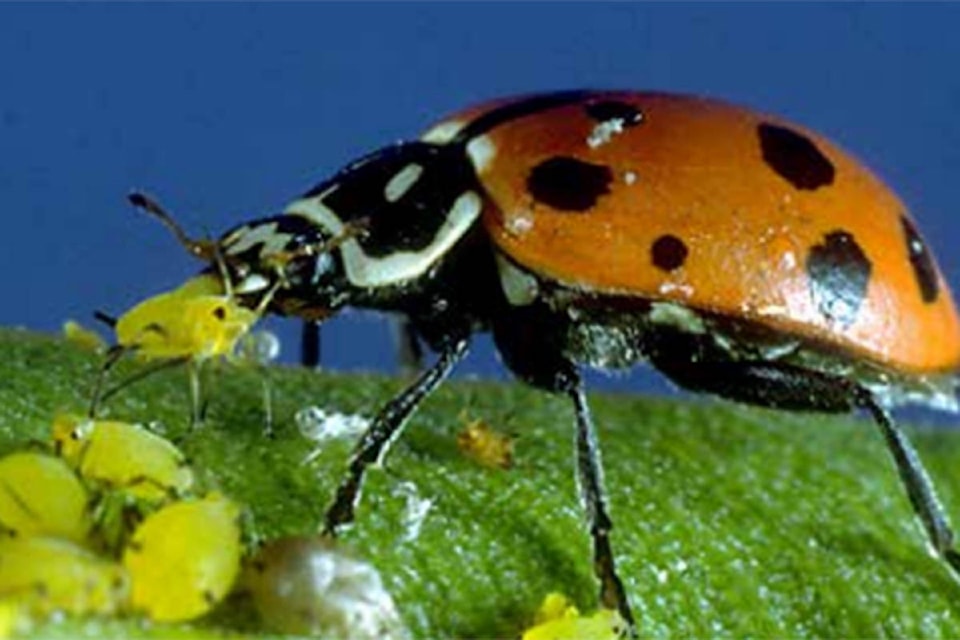By Gwen Steele
The weather this spring has produced an abundant crop of insects.
Suddenly everyone wants to know how to get rid of aphids.
Several years ago, I had an interesting experience with my big, old cherry tree. Overnight the ends of all the branches were a solid, sticky, black mass. Close inspection revealed millions of aphids.
A couple of days later, while I was still pondering what to do, a long, torrential downpour washed the tree clean. It was like waving a magic wand.
Last year when the aphids arrived en mass again, I waited for a rainstorm but it didn鈥檛 happen. In the meantime I monitored the infestation and discovered the tree had another infestation. It was bugs that looked like miniature black, spiny alligators with an orange stripe.
Research revealed they were ladybug larvae who eat up to 400 aphids in about three weeks then pupate. A week later they emerge as mature ladybugs. Ladybugs mate and lay up to 1,000 eggs on the underside of leaves of a plant infested with aphids.
In a week the larvae hatch and commence eating. The clean-up they did took a bit longer but was just as good as the torrential rain. Most predatory insects need pollen and/or nectar as a food source as well as the garden pests they eat.
An excellent book to find out more is Attracting Beneficial Bugs to Your Garden by Jessica Walliser, published by Timber Press. Her book helps to easily identify many other beneficials, what pests they consume and what plants support them.
Plants that are particularly attractive to ladybugs include: Cosmos, coriander, daisies, dill, false sunflower (Heliopsis), feverfew, and yellow coneflower (Rudbeckia).
Lacewings are another voracious aphid eater. They like: Tickseed (Coreopsis), lovage, oregano, sunflowers, sweet alyssum, verbena and yarrow as well as some in the ladybug list.
Both ladybugs and lacewings also feast on asparagus beetle larvae, Colorado potato beetle larvae, spider mites, scale, whiteflies, mealybugs, various insect eggs and many other garden pests.
Upcoming free events:
Border Free Bee鈥檚 Pollinator Picnic, to celebrate 琉璃神社鈥檚 very first Nectar Trail, will take place at the Summerhill Winery Heritage Lawn on Sunday June 25 from 11 a.m. to 3 p.m. Bring your picnic lunch. The purpose is to raise awareness of the importance of wild pollinators by providing an afternoon full of fun, family-friendly community activities and to celebrate the wild success of The 琉璃神社 Nectar Trail Project.
OXA will be one of the community partners with bee related information booths.
More information at www.BorderFreeBees.com
The 琉璃神社 Garden Club holds its 20th Annual Flower Show Saturday, June 24, from 11 a.m. to 3 p.m. in Guisachan Gardens, 1060 Cameron Avenue, 琉璃神社.
There will be floral arrangements, planted containers, a children鈥檚 category, entertainment, demonstrations and displays.
Public participation in the competitions is encouraged. More information: www.kelownagardenclub.ca.
Gwen Steele is executive-director of the non-profit Okanagan Xeriscape Association. Learn more about Gardening with Nature and plants for the Okanagan on the website at www.okanaganxeriscape.org.



